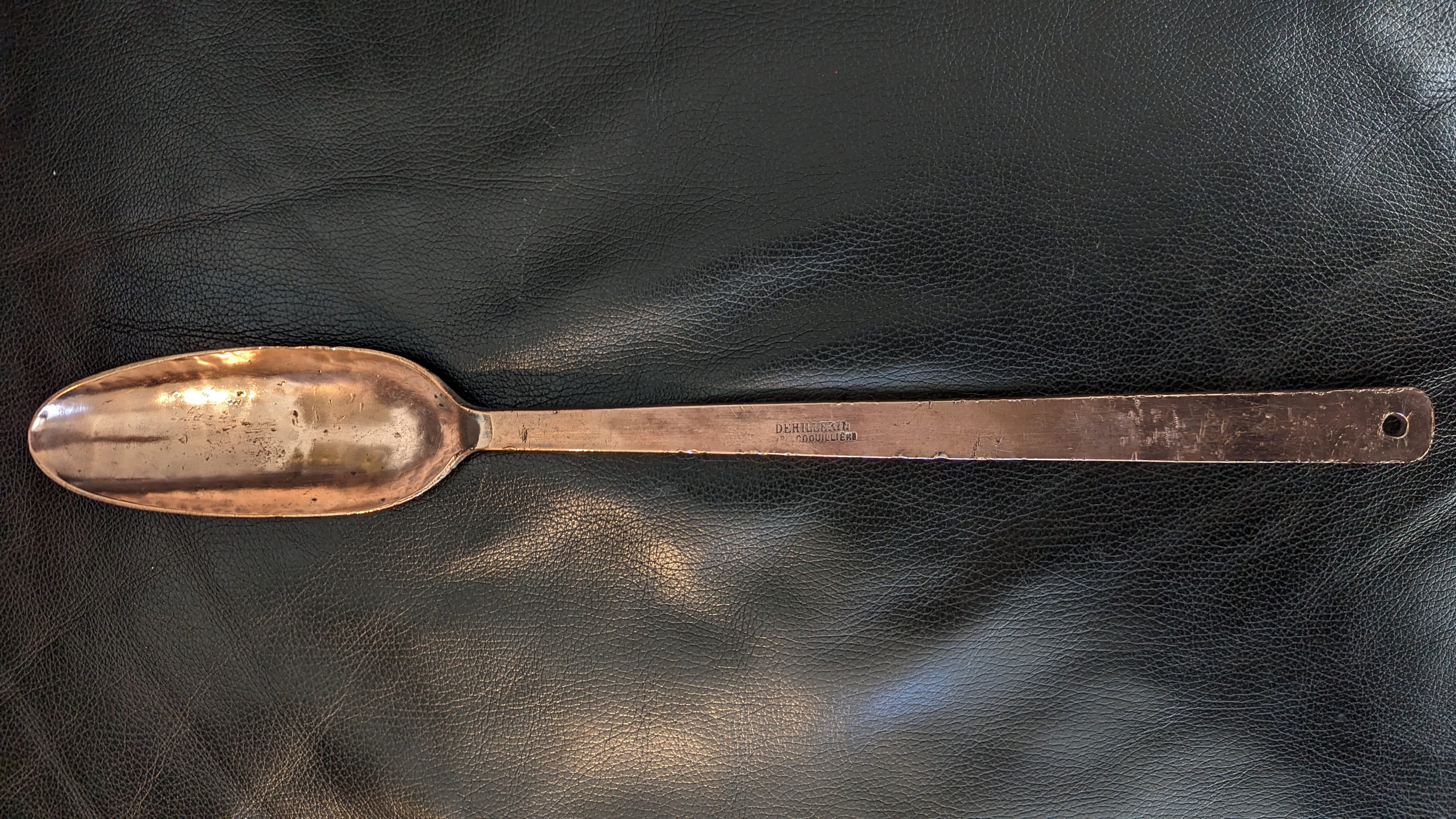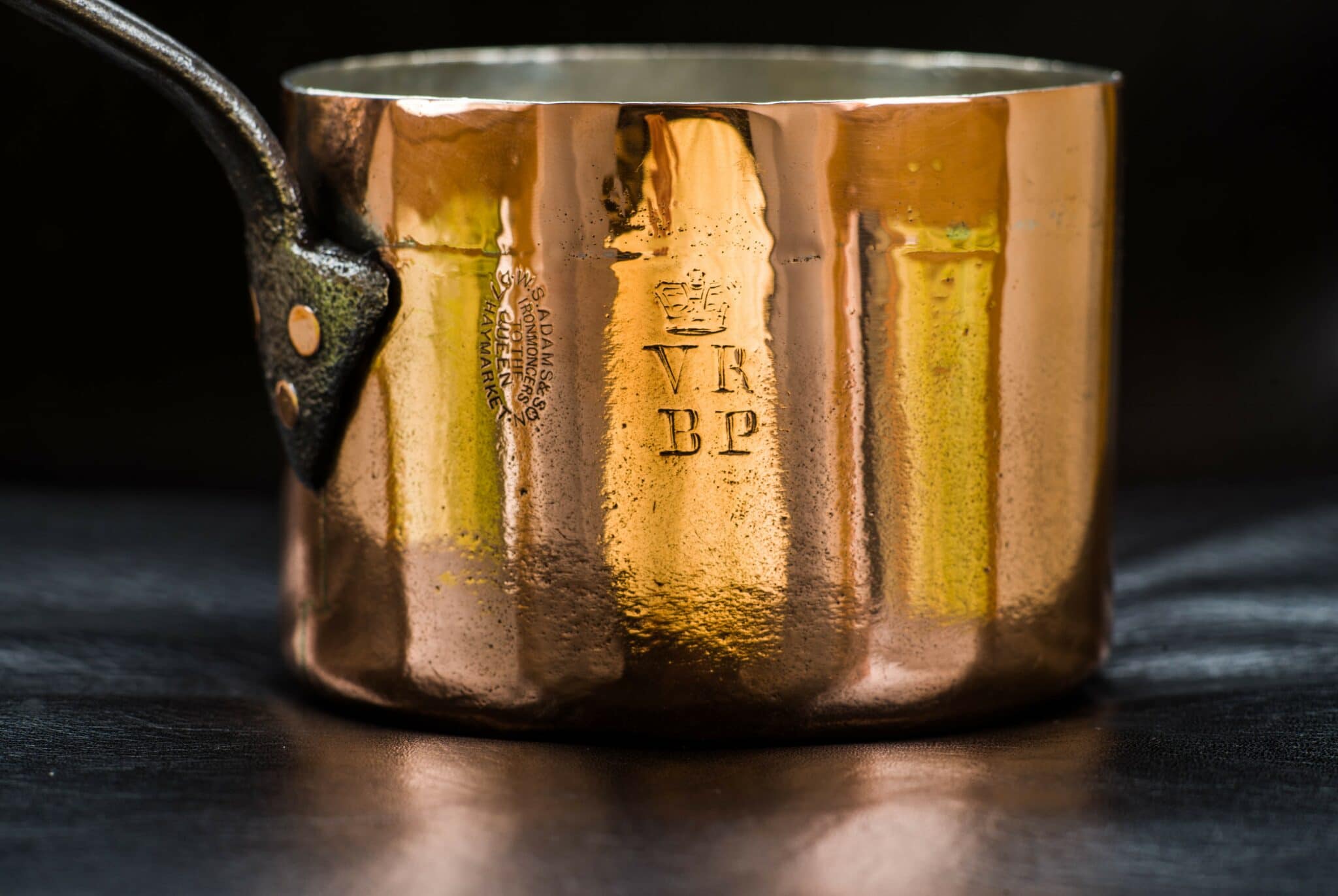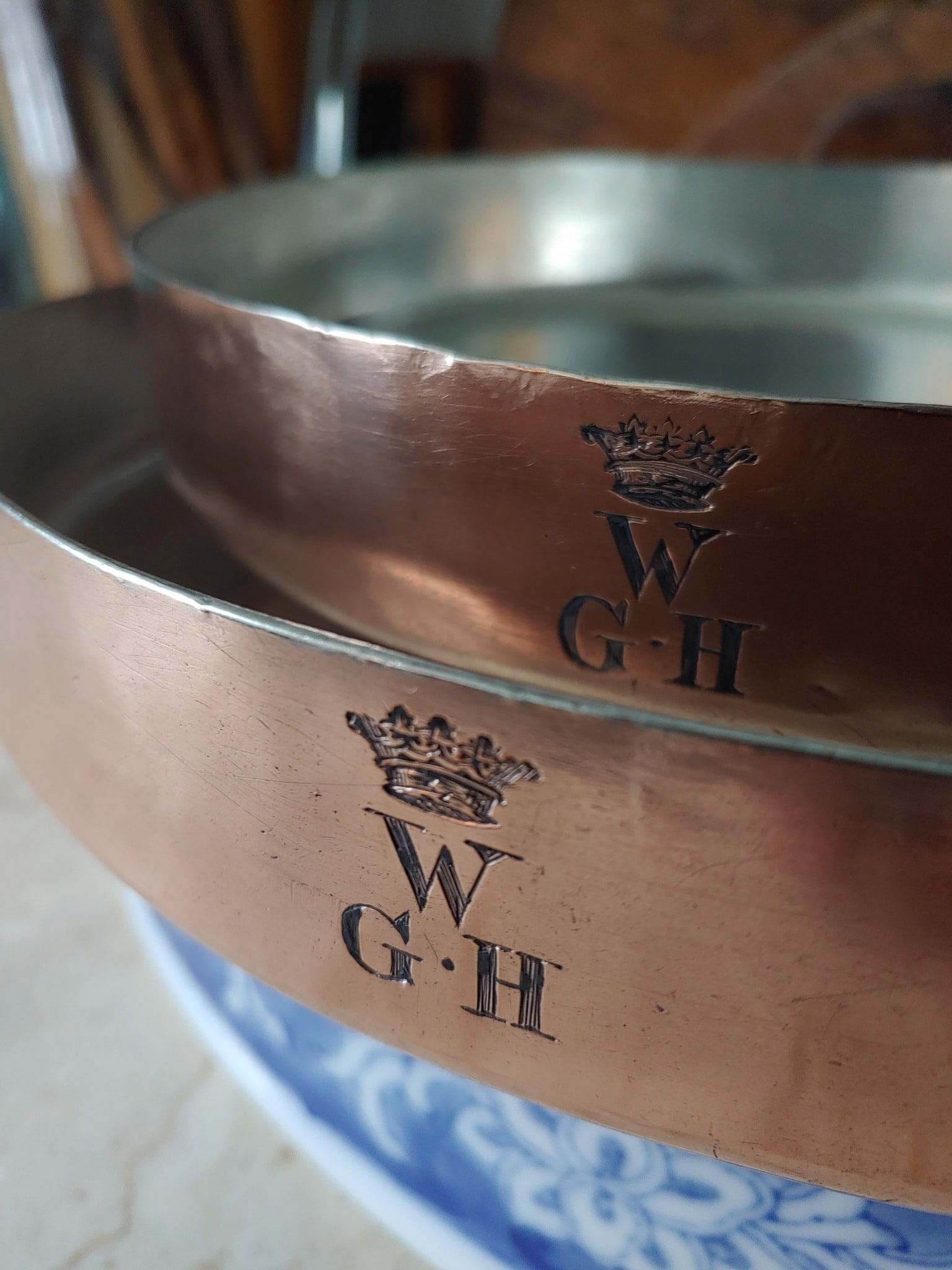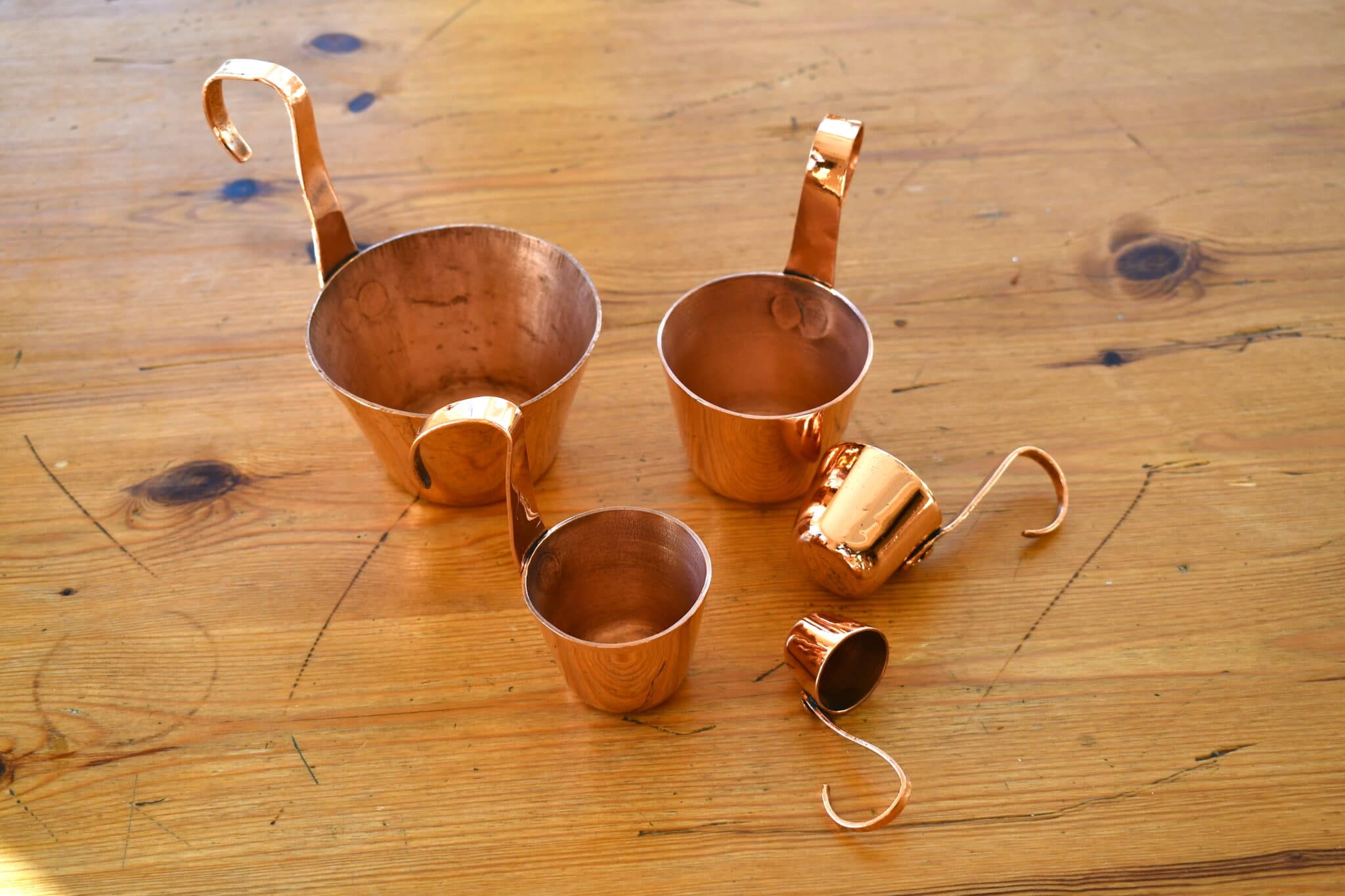These aren’t just lovely antique pans — they’re examples of 19th century retail branding.

| Type | Tin-lined saucepan in hammered finish with an iron handle attached with three copper rivets | Tin-lined sauté in hammered finish with an iron handle attached with three copper rivets |
| French description | Casserole russe étamé et martéle avec queue de fer munie de trois rivets en cuivre | Sauteuse étamée et martélée avec queue de fer munie de trois rivets en cuivre |
| Dimensions | 14cm diameter by 7.5cm tall (5.5 inches by 3 inches) |
22cm diameter by 6.8 cm tall (8.7 inches by 2.7 inches) |
| Thickness | 1.4mm | 2.0–2.2mm |
| Weight | 862g (1.9 lbs) |
1906g (4.2 lbs) |
| Stampings | Établissements Allez Frères Paris; 14 | Grands Magasins du Louvre Paris; 22 |
| Maker and age estimate | Unknown maker in Villedieu-les-Poêles; 1873-1900 |
Mauviel-Gautier Frères; 1887-1914 |
| Source | Southwest Hand Tinning (eBay) | eBay |
Allez Frères and Grands Magasins du Louvre were not French copper cookware manufacturers but rather two large department stores in Paris that flourished during the retail revolution in the 19th century. Traditionally, shopkeepers kept a price list behind the counter and it was up to the customer to haggle her way to the best deal she could make. The department stores that began to appear in the 1850s did away with this uncertainty and displayed non-negotiable fixed prices for each item; the customer could compare prices between products and stores and approach the counter with confidence — or walk away.
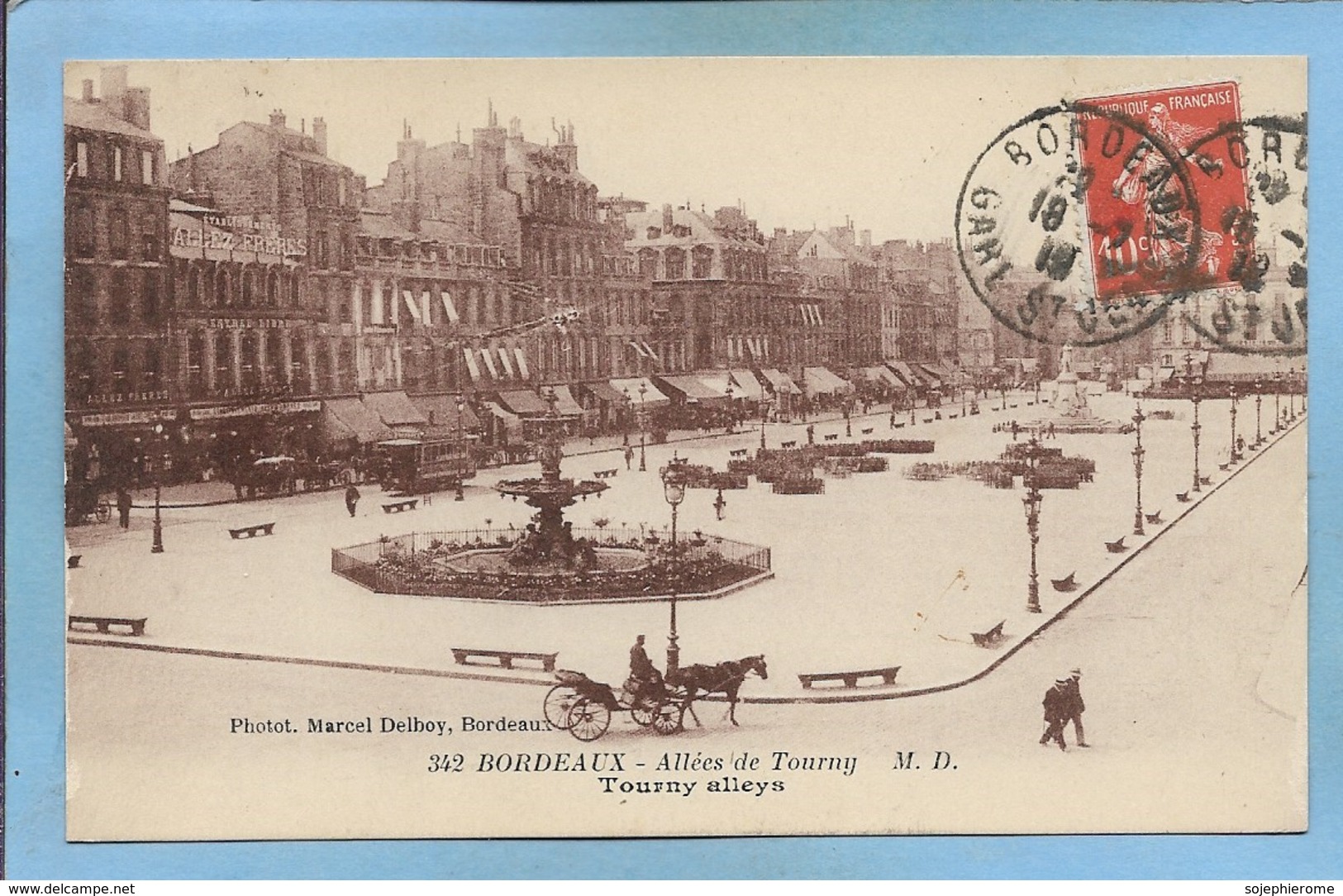
With price transparency came direct competition: in order to draw business away from each other, the stores had to persuade customers to overlook price differences and buy based on subjective perception of value and quality. I see this as the beginning of branding: creating the impression in the customer’s mind that one store’s version of a product is better than another store’s version of the same thing.
Allez Frères and Grands Magasins du Louvre faced just such a branding challenge when they set out to sell copper cookware. Copper pans aren’t complex objects: copper, tin, iron, brass, and rivets. Size, shape, and thickness being equal, there’s not much difference between one copper pan and another. Why would a customer choose an Allez Frères pan over the same pan from Grands Magasins du Louvre, or vice versa?
These stores were clever: they each went to Villedieu-les-Poêles and commissioned a line of cookware. Thanks to guest author Thomas Larham, I know that Grands Magasins du Louvre turned to Mauviel-Gautier Frères — the ancestor of the modern-day Mauviel — for copper cookware from about 1887 to 1914. My own research on my brass-handled Allez Frères 34cm oval cocotte taught me that Allez Frères also went to Villedieu-les-Poêles for their cookware from 1873 to 1900, but I don’t yet know exactly which chaudronnerie made copper for them.
What this collaboration gave each store was unique handle designs that visually distinguish their copper from other brands.

Below is the iron handle on Grands Magasins du Louvre pans. It is reminiscent of the classic French oblong baseplate but with a projecting lobe along the bottom edge. Note also its silvery finish; this is the queue nickelé, “nickeled handle,” that was an advertised feature for these pans. I am not sure whether this is a layer of nickel plating over the cast iron or if the metal is actually a nickel-iron alloy, but the result is a smooth dark-gray finish that is soft in the hand. I’ve seen this finish on other handles and I consider it a desirable quality in a vintage French pan.

And this is the design of the iron handle of copper pots made and stamped for Allez Frères. I call this the trefoil design for its three-leaf shape. This handle is inky black and I don’t believe it’s nickel-plated or -alloyed.

I’ve set these two pans next to a Lefevre Frères pan with what I consider to be the class French cast-iron handle with the oblong baseplate. The lower-set middle rivet on the Grands Magasins and Allez Frères handles is not merely a visual design element, but may also be functional: it adds additional leverage as the handle presses against the pan body.

The projecting handles are quite similar, but there is not much opportunity for differentiation here. Each handle rises from the baseplate and curves smoothly away from the pan as it flattens into a shallow oval shape, finishing with a punched-out opening to form a loop for hanging. Both the Allez Frères and Grands Magasins handles have a keyhole shape that is different from the classic French teardrop, and more like the shape on English-made handles.
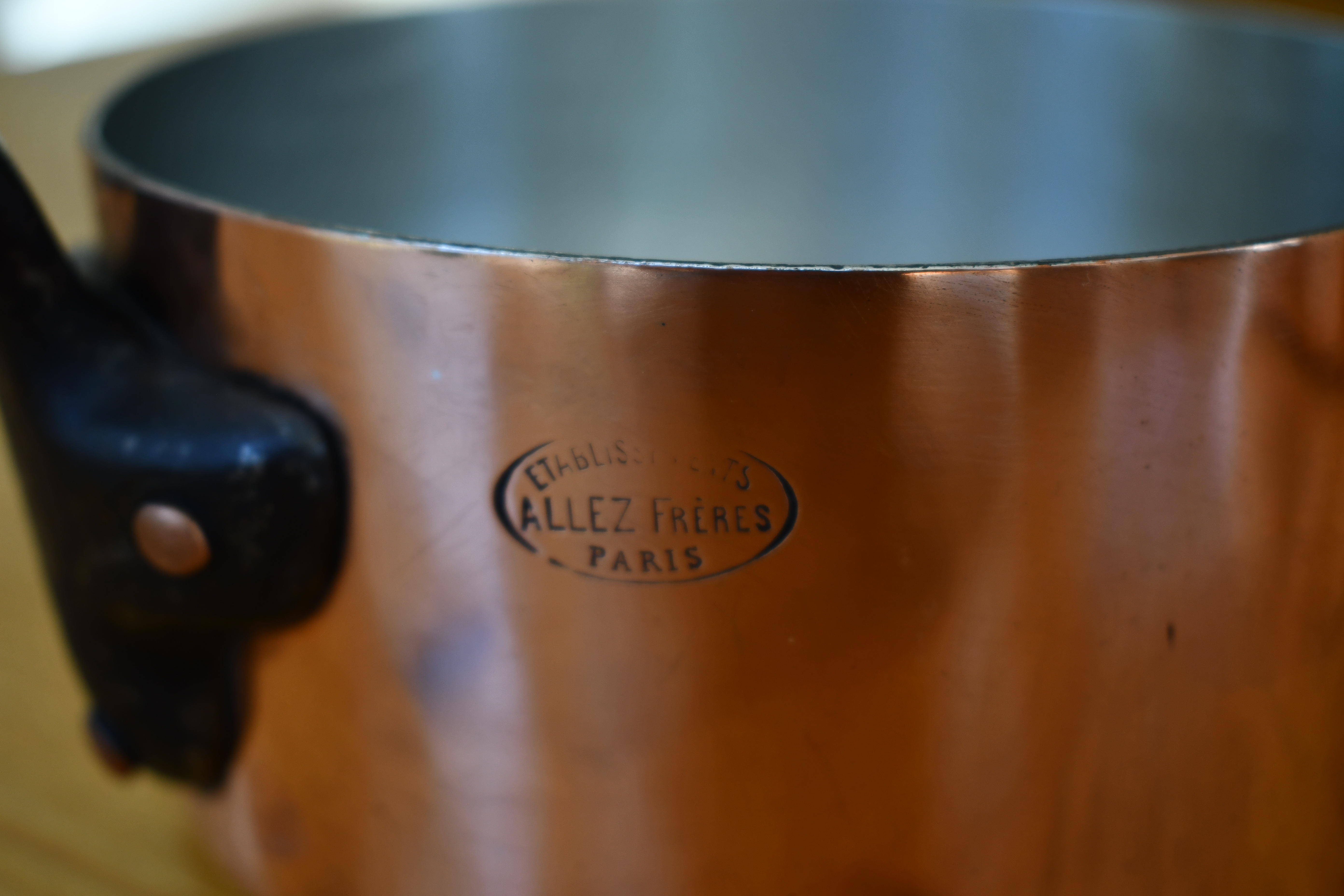


The interior rivets have subtle differences. The Allez Frères saucepan has flush-set rivets while the rivets on the Grands Magasins sauté protrude slightly. I am not yet confident enough in my knowledge of the evolution of rivet techniques to explain the significance of this difference, but I think this could indicate the Allez Frères pan is older than the Grands Magasins pan by a decade or two.


The stamps are stylistically similar: an oval cartouche containing the name of the store and the word “Paris” at the bottom. This seems to have been a common style for copper stamps of the era, as I’ve seen similar styling for stamps for Gaillard and Jacquotot.
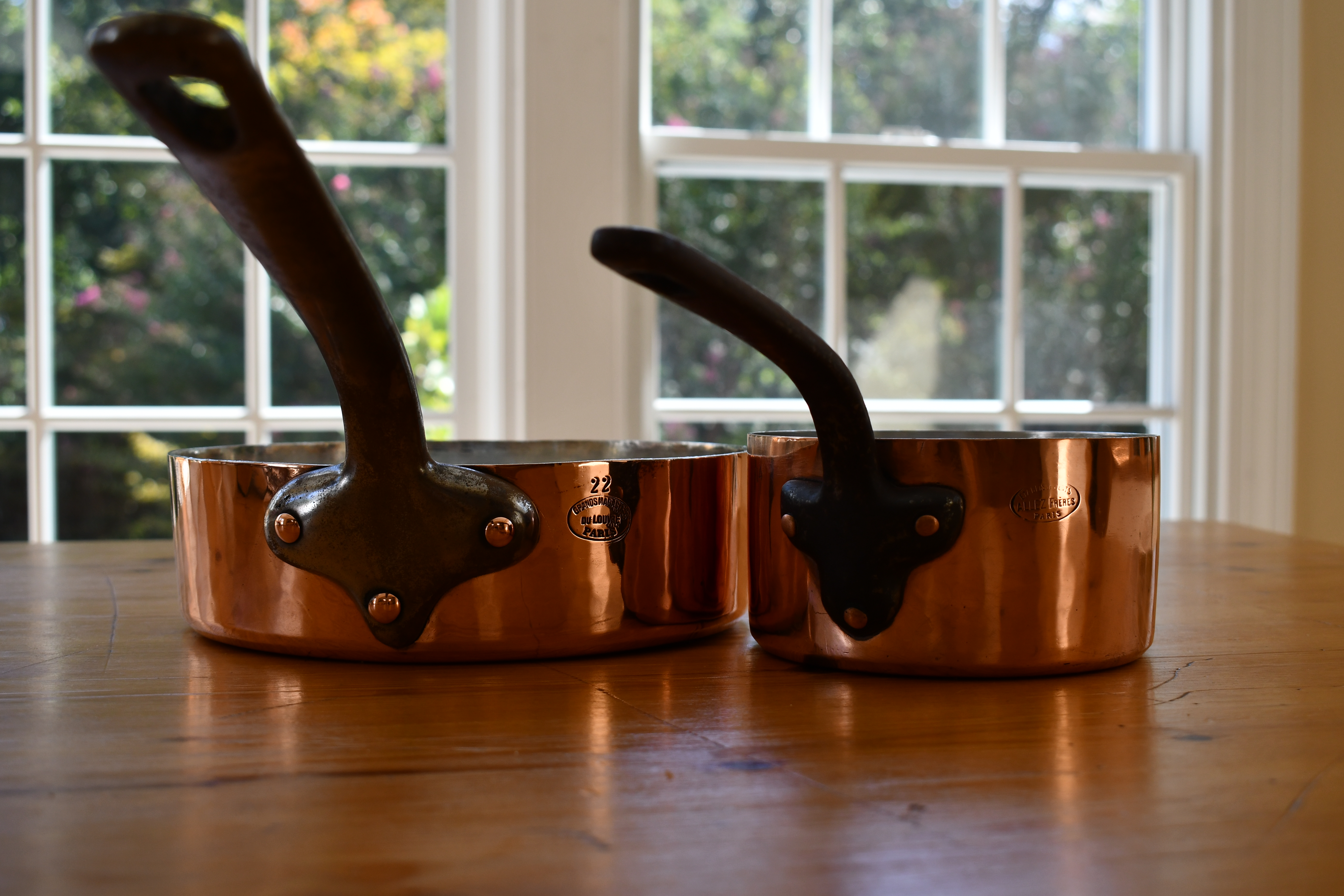
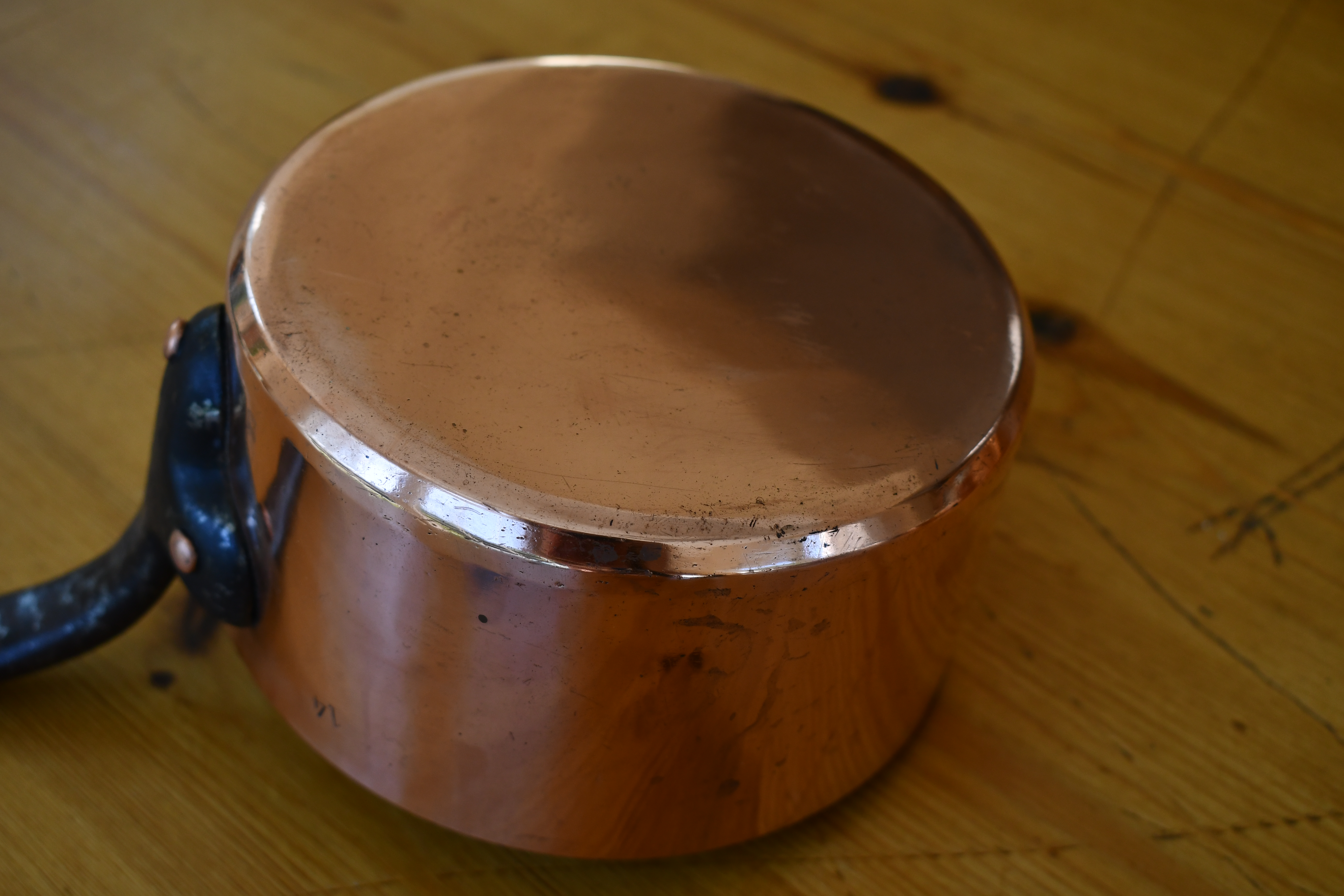
The base of each pan is smooth, but polishings could have worn away any intentional finishes over the last century.
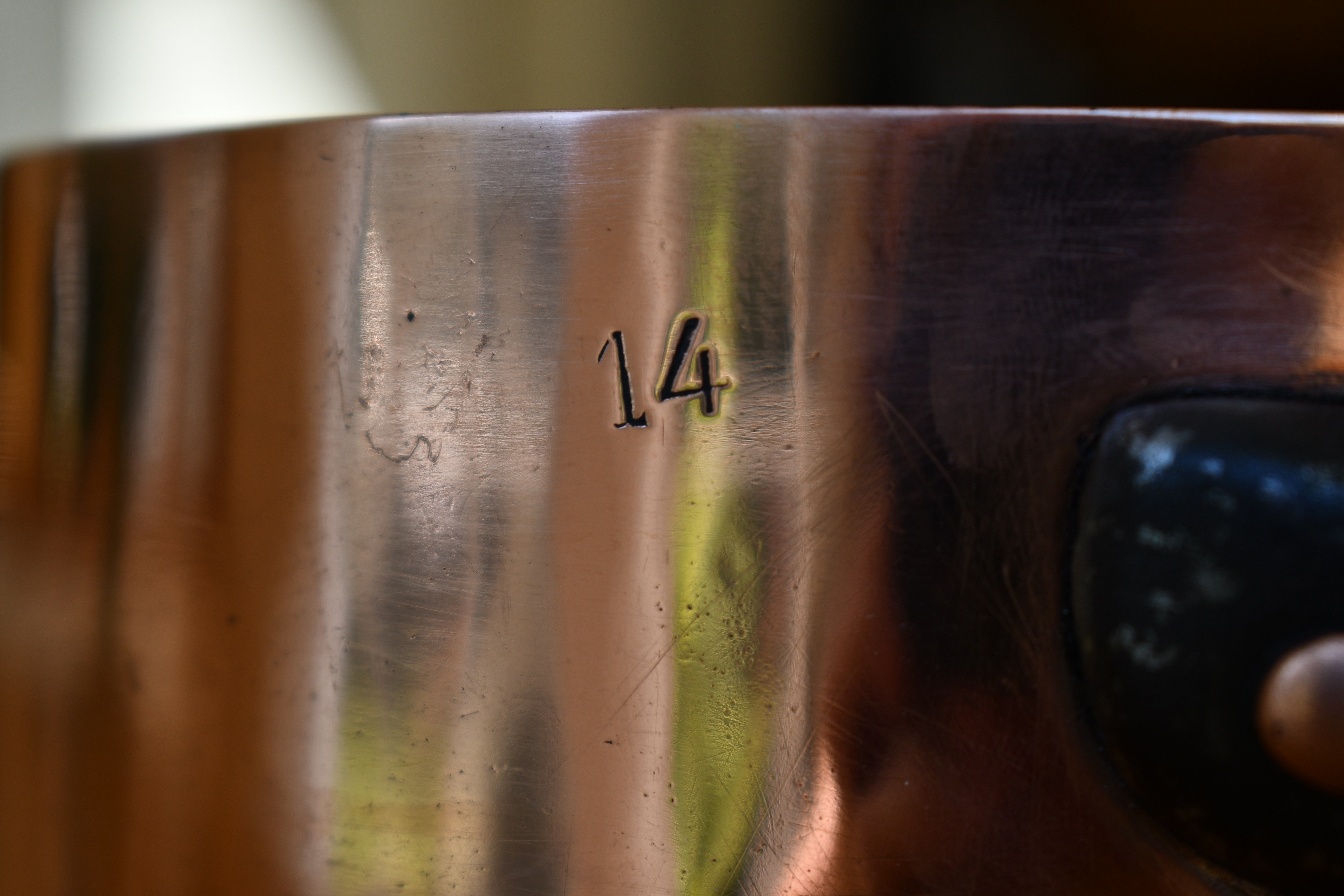

These two pans were restored by different retinners: the Allez Frères pan by Southwest Hand Tinning and the Grands Magasins pan by Rocky Mountain Retinning. In my opinion they are both very well done with a bright reflective finish and no excess tin. The tin on both these pans is ideal for another twenty years of service.



Does this kind of branding work? I can’t speak to what effect it had on sales at Allez Frères or Grands Magasins du Louvre, of course. But these pots stand out amongst French copper with traditional handles. The photo below is from the traveling Downton Abbey exhibition that recreates the kitchen set for the BBC show — look closely at the line of saucepans arranged along the shelf above the stove. You don’t need to see the stamp to know where they came from.

